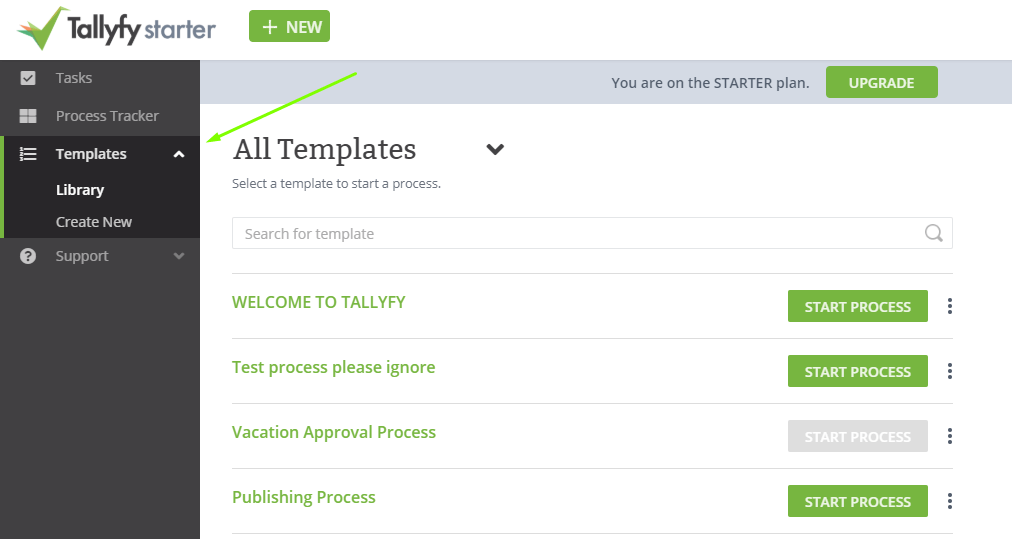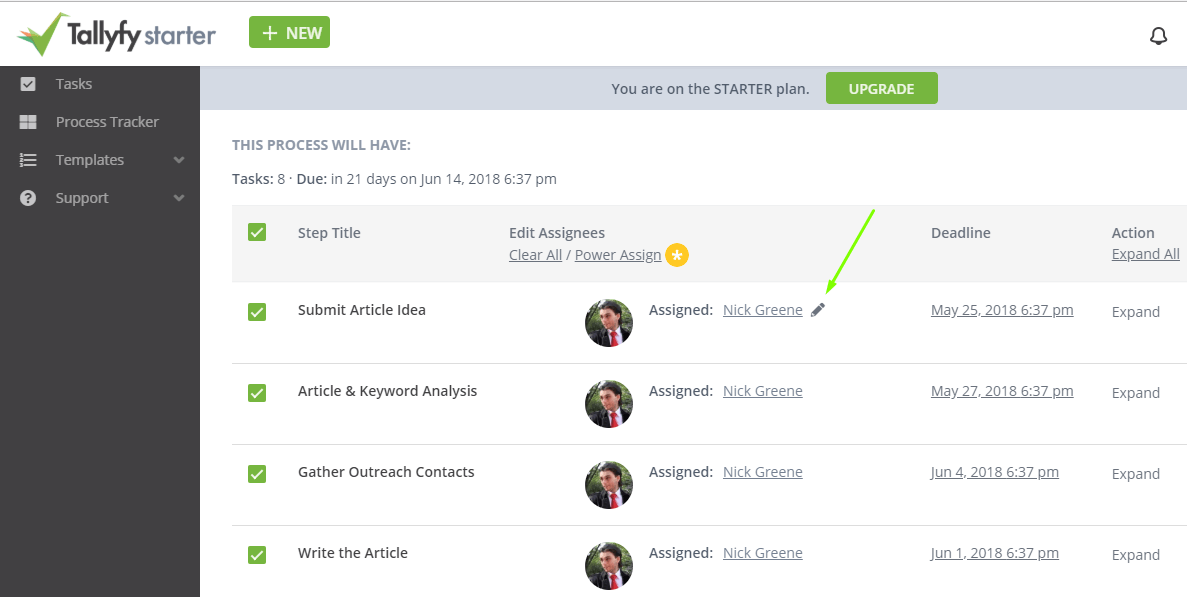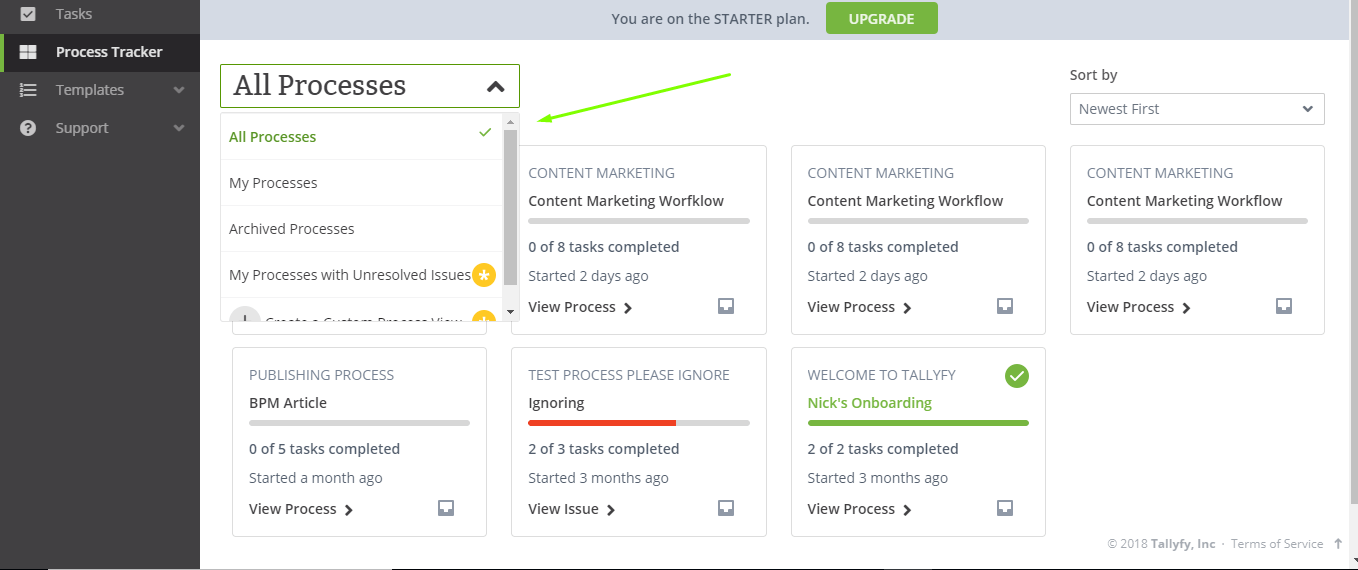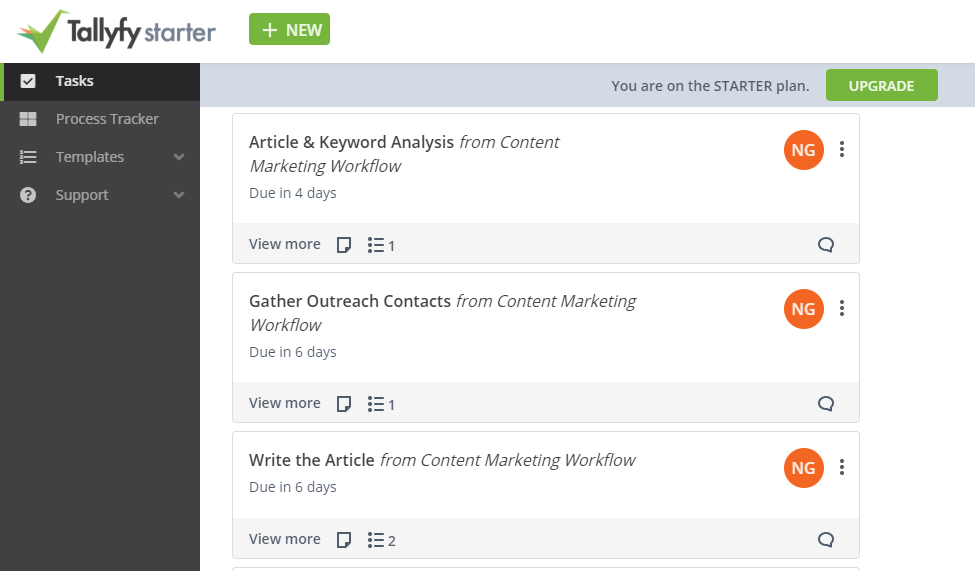A workflow application is a spin-off of the age-old business process management software. The main difference is that workflow apps are easier to use, cloud-based, and don’t cost an arm and a leg.
In this guide, we’re going to teach you…
- What’s a workflow application?
- How workflow apps benefit your business
- How to use a workflow app
- 3 practical use-cases for a workflow app
What’s a Workflow Application?
A workflow application is a tool that allows you to automate business processes. By automate, we don’t mean the entire process, though.
While that would be pretty cool (imagine a product manufacturing itself!), it’s pretty much impossible.
Rather, the workflow app automates the guidance of the process. Without software, the employees have to communicate in between themselves.
So let’s say the employee in charge of task #1 finishes their work. They need to manually reach out to the employee charged with task #2 and tell them it’s their turn to work on the process. They might also give them some sort of information or data needed for employee #2 to complete the task.
With a workflow application, this is completely automated. The software makes sure that every employee that’s part of the process receives their tasks, deadlines, data, and so on. This makes the process significantly smoother & more efficient.
In addition to process automation, workflow applications have several other benefits. You can, for example, track relevant metrics…
- How much time does the workflow take?
- How much time do individual tasks take?
- How often are the deadlines missed?
- Are there any frequent bottlenecks within the workflow?
How to Use a Workflow Application
As with most other software, your journey starts with a registration. We might be a bit biased, but Tallyfy might be as good of a start as any. Unlike most BPM or workflow software, it’s free to start!
Once you’re on the platform, you can…
Create Processes From Scratch – Our unique drag-and-drop workflow builder makes process creation easy. Zero coding knowledge required!
Use a Workflow Template – Tallyfy’s platform offers 10+ different workflow templates, such as employee onboarding, client onboarding, approvals, and so on.

Customize Templates – Every company has its own unique spin on processes. Take some of our public processes & personalize them for your needs.
Once you’ve picked the processes you’ll be automating, you need to get all the relevant employee on board the platform.
Whenever you start working with a process template, you can send out invites through the “new” button…

Then, kick-start processes whenever they’re needed. Go to templates è library and click “start processes” for whichever workflow you’re working on…

Then, assign the right employee to each process step…

And of course, hit start!
You’ll get an option to view 2 different dashboards. In “process tracker,” you can view the processes you’re personally involved in, archived processes, all processes, etc.

And on the other hand, you can also have the “task-view.” Since task and process management can intertwine, you can use Tallyfy for both!
The task tab shows all the tasks you’re responsible for sorted by urgency…

If you’d like to learn more about the practical applications of workflow software, read on for some of the use-cases!
3 Practical Workflow Application Use-Cases
Workflow applications are, for the most part, used for procedures. Onboarding is a good example – whenever you hire a new employee, land a new client or supplier, and so on, you have the exact same steps you need to go to.
In this guide, we’re going to cover employee onboarding, approvals and content marketing, specifically.
Employee Onboarding
Your employees are the key to company success.
If you keep them happy and satisfied with their job, they’ll do their very best to help the organization succeed. If you fail, though, replacing them will be expensive.
How expensive? As a given, it depends on the level of their experience. On average, it’s going to be…
- Entry-Level – 30-50% of annual salary
- Mid-Level – 150% of annual salary
- Specialized – up to 400% of annual salary
While there’s no real way to make all of your employees stick, you can significantly improve your retention rates and lower turnover.
In fact, by employing a structured onboarding process, you can increase employee retention by up to 25%.
Approvals
If you’ve ever worked with approvals, you probably know that it’s a lengthy & boring process.
You’re sitting at your desk with hundreds of different invoices laying around your desk – and you’re supposed to stamp all of them.
Even if you’re using email for approval, you’ll still end up sending hundreds of emails, overloading your co-worker’s inboxes.
Instead of dealing with all this, you can use Tallyfy’s workflow application as a centralized hub for all your approval processes.
And to make this even better, you can automate multi-step approval processes. Once you’ve approved a document, the system automatically sends it over to the next person that has to approve it, right until the process is complete.
Content Marketing
Content marketing can be extremely hectic – trust us, we know. We’ve been doing that for a while.
The process is usually very straightforward…
- The writer creates a draft of the article
- The writer submits instructions to the designer about what the article should look like
- The editor polishes up the article until it’s gold
- The designer creates the relevant graphics
- The marketer creates a list of channels for outreach
- The SEO specialist optimizes the article for search and publishes it
- The marketer does outreach
In theory, this doesn’t sound too complicated. In practice, though, it can be very hectic.
The designer gets piled up in product work and forgets about the deadlines for the graphic, the marketer is late with the outreach list, etc.
With a structured process, though, this whole thing becomes much, much easier.
Getting Started With Workflow Applications
Until recently, getting into process management was extremely hard.
Most BPM software can cost up to 6-figures to even get started. Workflow applications, however, make this affordable for businesses of just about any size.
Give Tallyfy a go. If you see significant improvements to your processes, good! If not, you’re not losing anything.
Related Questions
Does Google have a workflow tool?
While Google doesn’t have a dedicated workflow tool, the company has a number of apps that can be integrated to create basic workflows. Google Workspace (previously G Suite) includes tools such as Forms, Sheets, and Apps Script which can be used to develop simple workflow processes. But these aren’t on par with dedicated workflow applications capable of offering advanced features required for complex business processes.
What program can I use to create a workflow?
There are countless applications to build out workflows ranging in complexity. There could be several popular options like trello, for visual task management, alsana for making teams work together and Micosoft Power Automate for triggering workflows automation between application to application. Indeed, dedicated workflow applications—such as Tallyfy—offer native solutions to streamline and automate complex business processes better than other generic workflow tools and are more efficient, consistent, and agile if you manage the operations for an organization. Also read: What is workflow?
What is the best workflow management software?
Which workflow will work the best for you highly depends on your particular situation, but among the best workflow management software you can find are the following: Tallyfy, Kissflow, NintexThese systems feature a combination of easy-to-use interfaces, robust automations, and integrations. Tallyfy with its very intuitive design and process improvement focus is my number one in this space. While selecting that perfect software for your organization, you need to discuss everything from simplicity to scalability, integrations, and more.
Who uses Workflow Apps?
Different types of organizations and individuals use workflow apps. They are used by enterprises of every size, from small start-ups to multinationals, to boost efficiency. Hyperautomation is especially favored among companies in hyper-complexity industries including manufacturing, healthcare and finance. They’re deployed by project managers to structure workstreams and teams, by executives seeking to gain more visibility into their businesses. You’re not the only one; freelancers and solopreneurs rely on workflow apps, too, to tackle the way they work on projects and client work.
What are the Common Features of a Workflow Apps?
Workflow apps will typically share some common functionality to aid in process management and efficiency. These tools are often visual process mapping tools that let users create and edit workflows graphically. They assist in maintaining a record of the completed and the accountable. It uses automation features to minimize manual work by performing actions following. Many also include options for integration with other business tools, mobile access for on-the-go management, and customizable forms for data collection. Advanced workflow applications Quite like Tallyfy also offers a facility of process optimization and continuous improvement.

